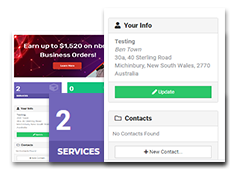In today’s digital landscape, understanding and managing cybersecurity risks is essential. Organisations must stay ahead of potential threats to ensure that their systems, data, and client information are safe from cyberattacks. To support this mission, Project Guardian, Hosted Network’s free-to-use vulnerability scanning tool, uses the widely recognised Common Vulnerability Scoring System (CVSS). This standardised framework categorises vulnerabilities by severity, empowering partners to prioritise and address security issues in order of severity of risk. This blog delves into what Project Guardian and CVSS offer, why they’re essential for your business, and how to leverage them to build a more secure environment.
What Is Project Guardian?
Project Guardian is a vulnerability scanning tool, included free of charge with all public connectivity and cloud services running via Hosted Network’s connectivity network. It identifies potential risk exposures and security weaknesses across internet connected services like connectivity, cloud and voice services.
Introducing the Common Vulnerability Scoring System (CVSS)
The Common Vulnerability Scoring System (CVSS) is part of a widely used framework for evaluating vulnerabilities. CVSS assigns each vulnerability a score from 0-10 based on severity. This number is known as the Common Vulnerabilities and Exposures (CVE) score. The CVSS rating helps organisations prioritise risks by assessing how easily a hacker could exploit a vulnerability, the potential scope of impact, and the consequences of an exploit. CVSS also considers whether vulnerabilities are currently exploitable and if remediation measures, such as patches, are available.
The CVSS score is a scale from 0 to 10, categorised as follows:
- None (0): No vulnerabilities detected. Systems are secure, but continuous monitoring is advised.
- Low (0.1 – 3.9): Minor vulnerabilities exist; action is required to secure client systems.
- Medium (4.0 – 6.9): Moderate severity; timely remediation is recommended.
- High (7.0 – 8.9): High risk; threats could lead to significant harm if exploited.
- Critical (9.0 – 10.0): Catastrophic severity; immediate action is necessary to prevent severe damage.
This straightforward rating system allows teams to quickly assess the level of threat a vulnerability poses and take action accordingly, aligning with best practices for proactive cybersecurity management.
Why Cybersecurity Awareness Is Vital for Modern Businesses
With the evolving complexity of cyberattacks, businesses must adopt a vigilant approach to cybersecurity. By reviewing high CVE scores on Project Guardian, users can proactively assess and prioritise vulnerabilities, ensuring that cybersecurity remains a top priority within the organisation. This vigilance helps organisations prevent potential exploits, save on costly remediations, and maintain client trust.
Consider CVSS as the cyber equivalent of a fire danger rating system; it enables businesses to gauge the severity of potential threats and act before significant damage occurs. This forward-thinking approach strengthens the organisation’s security posture and serves as a competitive differentiator in an increasingly digital market.
Conclusion
As cyber threats continue to grow, understanding vulnerability severity is crucial for effective risk management. Project Guardian leverages the Common Vulnerability Scoring System (CVSS) as a guiding document to help organisations assess and prioritise vulnerabilities based on their The CVSS framework equips users with essential insights to manage and mitigate risks more effectively, strengthening their cybersecurity posture over time.
Interested in learning more about how CVSS can support your organisation’s cybersecurity strategy? Read the full CVSS documentation to explore how Project Guardian can help you stay a step ahead in vulnerability management.
 Contact us
Contact us  Partner Login
Partner Login  Service Status
Service Status 


 February 04, 2025
February 04, 2025

